Off the Map in Hallucinatory India: Ahilya Fort heritage hotel in Maheshwar, Madhya Pradesh
This week we’re in the heart of India at Ahilya Fort, a remote fifteenth-century temple and fort complex with a chic and surprising 12-suite princely guest residence.
I traveled in March to see a vibrant region of India few encounter. This voyage was pure discovery, a special insider look at vivid and emotionally engaging daily traditions, spiritual life, historic temples, rural life, and the enduring beauty and intensity of traditional India.
I went there alone, the better to experience, enter, and encounter every moment fully.
You’ll meet the inspiring owner, and see what attracted an international retinue of India-philes like Ralph Fiennes and Amanda Harlech (Karl Lagerfeld’s muse), dukes and duchesses, Mick Jagger, Lord and Lady Cavendish, Prince Michael of Greece and Denmark (yes, both), Hamish Bowles, and other seekers of rare peace and authenticity. It’s E. M. Forster, ‘The Far Pavilions’, and ‘The Jewel in the Crown’—with a dash of Ghandi’s idealism (Prince Richard founded the Rehwa Society to re-establish Maheshwar’s renowned hand-woven silk textiles).
Follow me. The photos are by Paris-based Vincent Thibert who was at Ahilya Fort in March and took these photos exclusively for THE STYLE SALONISTE.
Last spring I traveled to India and went in search of authentic village life, historic temples. I found the extraordinary Ahilya Fort in Maheshwar, central India. I met the owner, Prince Richard Holkar, the son of the last Maharajah of Indore, who runs the most magical and surprising and authentic hotel overlooking the lustrous, holy goddess river, the Narmada.
I love India. I travel there several times a year and always with specific goals—to research historic palaces and temples, to study textiles, to take paths unknown, to leap into its rich culture, its always-fascinating history. Along the way, I stepped back in time to a temple founded by a saint Queen (22 generations ago) and immersed myself in Maheshwar and Ahilya life. I encountered bright and witty and charming people going about their daily worship, saw places and crafts and traditions seldom viewed, and visited an inspiring village school, founded by the prince.
I’m at the enchanting Ahilya Fort hotel, high above the holy Narmada River. This private hotel, with just twelve suites, is run by Prince Shivaji Rao Holkar (Richard, to friends) the descendant of legendary ancestors, the princes who built this fort.
In a 1766 stone temple complex overlooking the sacred river, this hotel feels like a private residence. Décor is traditional Anglo-India, with hand-woven bed linens, quirky antiques, colonial-era photographs, chandeliers, and sofas for siesta.
In a 1766 stone temple complex overlooking the sacred river, this hotel feels like a private residence. Décor is traditional Anglo-India, with hand-woven bed linens, quirky antiques, colonial-era photographs, chandeliers, and sofas for siesta.
My accommodations are in a newly installed luxury tent (four-poster bed, bath, shower, sitting room, terrace) set in a lush and fragrant private garden in the ramparts of the fort, overlooking six-hundred-year-old basalt stone temples and the slow-moving river.
Breakfast: fresh papaya from the hotel gardens, and house-made walnut and sunflower seed bread, with cardamom and citrus preserves made by Richard Holkar in his Paris apartment kitchen.
The light is bright and seems to vibrate. The wide river shimmers far into the horizon. The bright air is vivid with the sounds of temple bells, prayers, chants, cawing crows, drums, the click and clack of handlooms, shouts from the riverbanks far below, dogs barking.
It is so intense. Hallucinatory. A wild symphonic and stereophonic crush fills the air. It’s as if Ravi Shankar and Miles Davis and The Beatles and Bob Dylan and Paul Simon and merry bands of the finest traditional tabla players and oud and drum champions had all arrived at the temple complex below and started jamming with the local priests.
The state of Madhya Pradesh, south of Delhi and north of Mumbai, is the lost jewel of India, rather inaccessible. Maheshwar, a two-hour drive from the state capital of Indore, is a totally authentic Indian regional town, not at all westernized.
I had first encountered Indore in the book (a must in any design library), ‘Made for Maharahas’ by Amin Jaffer (Vendome). It depicts Richard Hooker’s father in the thirties, and his glamour with Boutet de Monvel portraits, Ruhlman furniture, and stunning Brancusi sculptures and palaces belonging to the 23-year-old Maharaha of Indore.
Little remains but memories of that gilded time. Maharajahs and princes were abolished after India’s independence in 1947.
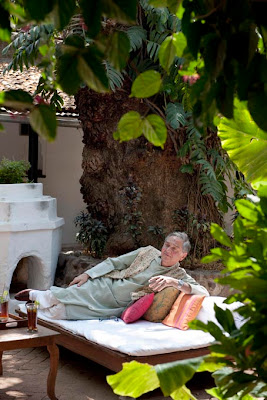 |
| Richard Holkar |
Richard Holkar was educated at Stanford. He’s thoroughly modern, totally cosmopolitan, a witty and engaging raconteur.
His presence at the hotel, a genial host of this guest residence, gives a sense of a private house party, rare and relaxed.
The day proceeds in wonder.
The fragrance of cloves and incense and burning firewood scent the air. Sunflowers and bougainvillea and passionflowers in the garden are psychedelic. Hummingbirds and hibiscus. Gardenias and marigolds. It’s warm, bright. Swoon.
I take a car and driver to visit Mandu, a nearby 15th-century garrison town, now deserted. I pass bullock carts, old men on wobbly bicycles, children walking to school.
Back at the Fort, leisurely lunch is served in the garden, (and other days on a patio, in the courtyard), with peripatetic polymath Richard Holkar hosting. An international guest list included a group of women artists from London, sunbathing Parisians, adventurous New Yorkers, and chatty Delhi-wallahs.
Wine was passed, along with consommé, salads (arugala, chicory, lettuces grown in the hotel potager from heirloom French seeds), and vegetables from the garden, bowls of crudités, and impeccably presented fish dishes in the traditions of Indian cuisine, deserts, an array of breads and cakes.
Later, I walk down to the river bank. There are no Westerners (other than one or two hotel guests). Pilgrims ebb and flow, and young girls in sparkling saris offer marigolds to panoplies of gods. Others do their laundry, also as a kind of religious act.
Temples crowd the eastern bank of the river as far as the eye can see. On the far bank, only verdant wheat fields and trees.
Temples crowd the eastern bank of the river as far as the eye can see. On the far bank, only verdant wheat fields and trees.
The Ahilya School
Photographs by Diane Dorrans Saeks
Also in the fort complex, a few steps from the guest residence, is the Ahilya School, a charming private school. It was founded in 1979 by Prince Richard Holkar, his former wife, Sally, and the Holkar heirs, for children of the weavers of the Rehwa Society.
At the invitation of the prince, I paid several visits to this grade school for boys and girls and found the children engaging, disciplined, and no doubt aware how fortunate they were to be at this Montessori-inspired school.
With 340 students, taught in morning and afternoon sessions, the school is a happy, calm, orderly, and delightful place. English is taught as a second language.
I wrote ‘Hello’ in chalk on the blackboard for the six-year-olds, and they all responded, ‘Hello’ amid laughter. They sang ‘Twinkle Twinkle Little Star’, and we played a game of ‘who am I’.
They study science, music, dance, yoga, physics, and Hindi, taught by a staff of tranquil and lovely teachers.
Life on the river
“The maharajah would like you to meet at the boat at 5.30 tonight.”
Koonta Bai, the lovely concierge/ hotel goddess/ guest director (and former nanny of the prince) quietly passed on my invitation.
At 5.30pm, the shikara poles the hand-carved and hand-painted boat out into the placid river, as locals swim, wash their hair, brush their teeth, chant devotions, dunked their babies, and leap into the river. Holkar serves chair and ginger cookies from a hamper.
The wide Narmada, holy virgin goddess river, bestows blessings and bounty to the region.
We crossed to a small temple on a rock in the middle of the river. Prayers were chanted, bells rang out, the sun slowly turned the river into gold silk.
We crossed back to the temple steps as a group of worshipers sang prayers that floated on the breeze. Later that night, a group of women, singing and dancing, celebrate the full moon and sleep in the moonlight on the riverbank.
As India hurtles helter-skelter into the future, Ahilya Fort hotel reveres the old, the ancestral, the eternal and profound India.
Darkness falls. Temple bells clang. Chanted prayers float in the warm air. The river flows. And so it shall be.
Ahilya Fort Hotel:
Best times to stay are during milder weather seasons from September—May. Summer is hot, winter, cool. Spring, Feb-April, is glorious. Tariff includes all meals and drinks.
Travelers fly into Indore (a one-hour flight south from Delhi, or north from Mumbai) and are driven to Maheshwar and Ahilya Fort.
The hotel’s highly congenial staff arranges excursions to the royal palaces of Indore, archaeological sites of the region, such as Mandu and Omkareshwar, as well as trips to historic temples and places of cultural significance.
For more information:
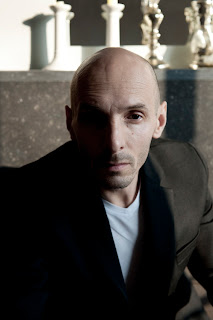 |
| Photographer Vincent Thibert |
Credit: Photos of the hotel and boat excursions by French photographer Vincent Thibert.
Contact him at [email protected].

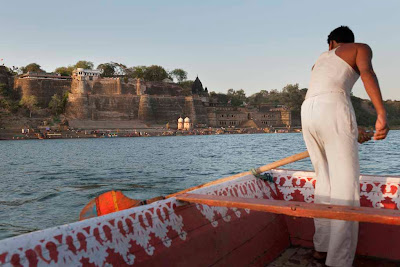

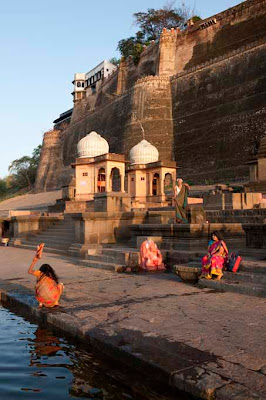










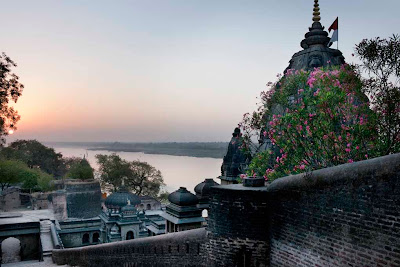





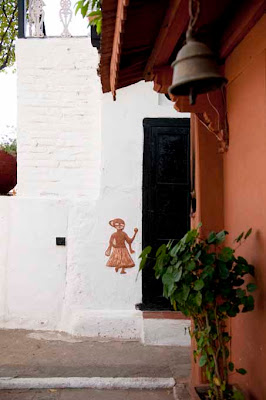



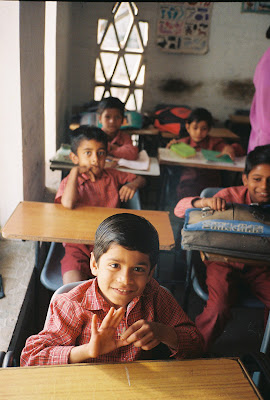



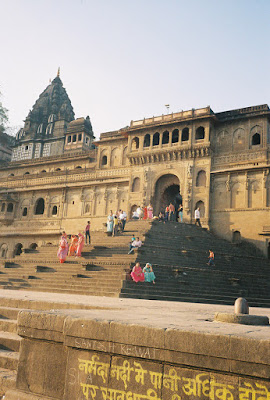
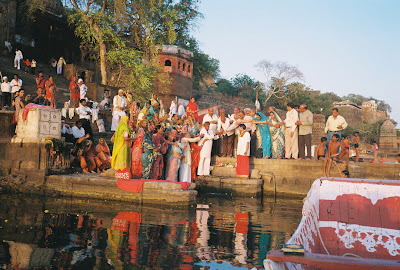



15 comments:
Oh my Diane! What a magical adventure. India is a place I would love to visit. You have made it all the more tempting. Is it a place to visit in the summer months? I will check the website you have shown. Thank you for sharing your beautiful trip!
Best,
Katie
Hi Katie-
That was quick! You must have had your finger on the key just as this post went live.
Best times to visit are during milder weather seasons from September—May. Summer is too hot, winter, cool. Spring, Feb-April, is glorious. Go for at least 2 weeks, more.
After April it is simply too hot--until after the monsoon season (intense rain). You would not travel there from April-October, for best weather.
I was there in spring. It was glorious...warm but not hot. Evenings very pleasant. Could dine outside every day. Also ideal for fresh fruit and vegetables, lettuces. Keep me posted. I've been traveling to India since I was in college and have spent a lot of time there. I adore it. Love the people I encounter. It's a vivid and stimulating and (for me) very uplifting country, most inspiring. best, DIANE
It all looks really wonderful. India was not at the top of my list for destinations, but I may reconsider after your presentation.
Ohh how divine! I am passing this on to a client who travels a great deal + I am ready to go. thank you, Diane
xxpeggybraswelldesign.com
Diane,
What a magical place! It makes me want to go back to India! Thank you for sharing such a special piece of India. My sister is here for the summer since it's terrible hot there so we've had fun together traveling.
Wishing you a wonderful summer Diane. Hope to get back for there soon.
Fondly,
Audrey
Dear Friends-
Loved hearing from you!
I like it when readers say 'I was not interested in India and now I can't wait to go there.'
I had the following message from Richard Holkar, the prince who directs and designed and stage manages Ahilya Fort hotel:
Greetings Diane
What a great article!! Thank you SO much,
and we hope to see you again.
Best wishes
Richard
Hello-
Received the following message from photographer Vincent Thibert in Paris--he photographed Ahilya Fort for me:
"I am jumping on it!"
My warmest regards, dear Diane.
Vincent
Diane,
This was dreamy.. THANK YOU. I feel like I was there.
Love your photos of the school and the children.
best and more best,
Katie
I felt completely transported by this post...the slow moving river, the sounds you describe like the music of India...a sensory delight, beautifully written and evocativela.
Much food for thought as we plan a December trip!
Thanks so much.
Diane,
Your portrayal of this little know corner of the world is the essence of Shangri-La and hard to believe that such a place still exists. Wonderful photos and story... I too would love to see it first hand. It was sad to hear about the terrorist attacks in India today...
What an amazing trip, and your wonderful post makes it all the more enticing for me...gorgeous!!
I can totally see why you'd go back in a heart beat. Visiting India has been on my wish list and reading your entry made me want to visit. Wonderful images too!
Thank you Diane!
Trinidad
This is the most beautiful adventure to read and view. Thank you so much for posting. I hope to visit the places you've suggested in the future.
Dear Friends (from all over the world),
Thank you so much for your enthusiasm. I'm so very pleased you liked this post--and that it might inspire you to travel to India.
While many of my friends travel to India often (on business or for a holiday), I often hear from other well-traveled friends that 'India is not on my radar' or 'I would never travel to India' or 'India was never on my list but now that I've seen it through your eyes I want to go there."
I suggest traveling in India, as I usually to, off the beaten path. Yes, arrive in Delhi, explore, then head for diverse regions to get to know people and villages, art, music, dance, architecture, history. It is rewarding, surprising, personal, and inspiring--and like no other place. I hope you will all have the opportunity to visit India. I'll be posting more on India in coming weeks.
cheers, DIANE
Post a Comment